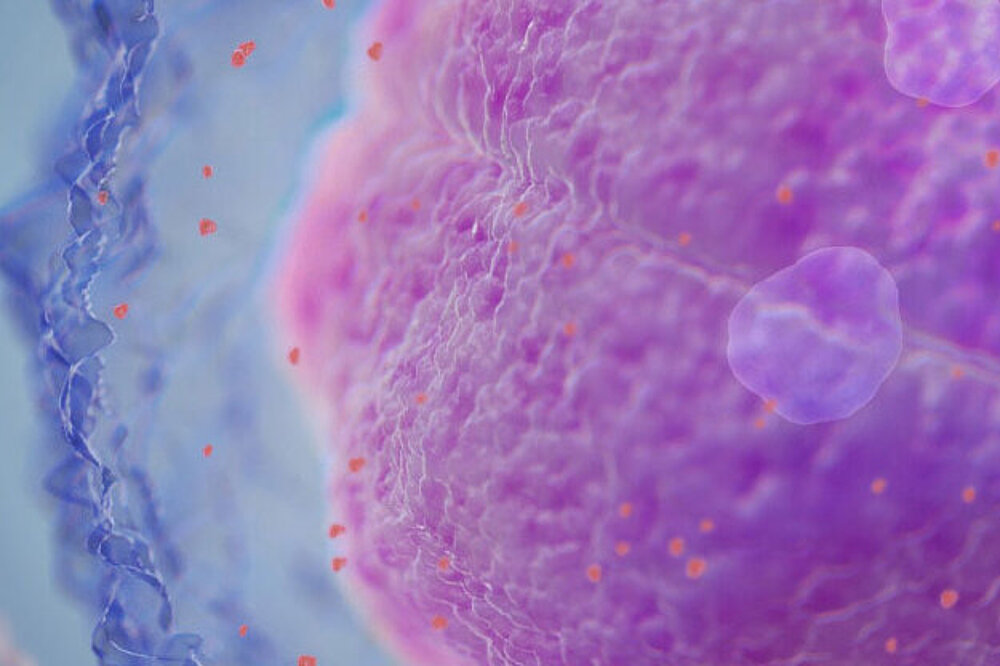Be confident in appropriate anaemia diagnosis and therapy
Anaemia is the most common haematologic abnormality in patients with solid tumours and haematologic malignancies. Anaemia in oncological patients reflects multiple possible aetiological factors such as a result of nutritional deficiency, impaired RBC production or a side effect of chemotherapy. Iron deficiency is among the most common causes of anaemia and can develop in almost half of the patients with haematologic malignancies. Functional iron deficiency is predominant, due to the underlying disease or therapy-related inflammatory processes.
Common laboratory parameters to assess the iron status such as ferritin and transferrin saturation (TSAT) are affected due to their role as acute-phase proteins and cannot reflect iron availability for erythropoiesis reliably. The state-of-the-art Sysmex XN-Series analysers offer a parameter that directly and reliably assesses the availability of iron for haemoglobinisation – the reticulocyte haemoglobin equivalent (RET-He).
Benefits of having the reticulocyte haemoglobin equivalent analysed
- The reticulocyte haemoglobin equivalent (RET-He) reflects the haemoglobin content of reticulocytes – immature red blood cells preceding the mature RBC stage by a few days, and thereby giving an indication on the haemoglobinisation quality of new RBCs.
- It directly reflects the bioavailability of iron for erythropoiesis over the previous 2 – 4 days, independent of the acute-phase reaction – unlike TSAT and ferritin
- Values below 28 pg are indicative of functional iron deficiency and thereby provide valuable therapy decision guidance in patients with solid tumours or haematologic malignancy
- Early indication of the response to iron therapy and/or erythropoiesis-stimulating agents
- Affected by individual biological variation to a much lower degree than TSAT and ferritin
Anaemia in lymphoma
A 60-year-old woman with a history of multiple medical conditions presented to the emergency department with acute upper gastrointestinal bleeding. She reported increasing weakness over weeks and repeated upper respiratory infections. The endoscopy revealed gastric ulcer, and a subsequent diagnosis of plasmablastic lymphoma was made. Initially, due to severe anaemia, the woman was transfused with one unit of RBC concentrate. The patient remained anaemic with reduced red cell parameters (HGB 7.7 g/dL, HCT 22.4%).
Although reticulocytes were increased (RET 3.4%), the haemoglobin content of the reticulocytes was decreased (RET-He 26.8 pg), indicating high reticulocyte turnover, but iron deficiency for their haemoglobinisation. Thus, the haematologist held off from an additional transfusion while an appropriate therapy of iron infusion was indicated, along with all other medical interventions. RET-He proved to be a more meaningful test than the inconclusive, extremely elevated ferritin (1,100 ng/mL) and decreased TSAT (17%) values, both of which are acute-phase reactants.
Had only these parameters been ordered, the clinician could have mistakenly concluded that the patient was replete with iron and so missed the opportunity for appropriate anaemia therapy.
![Anaemia diagnosis [.CO.UK-en United Kingdom (english)] Anaemia in patients with haematological malignancies](/fileadmin/_processed_/0/6/csm_shutterstock_451006501_2658ec4ca3.jpg)



